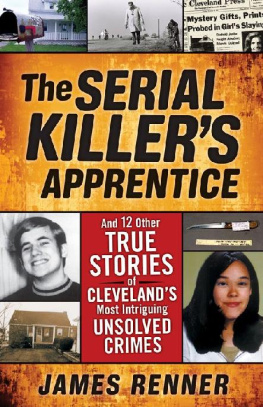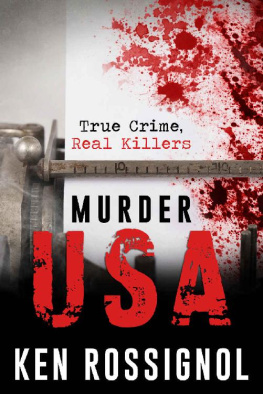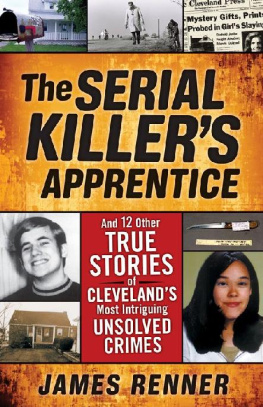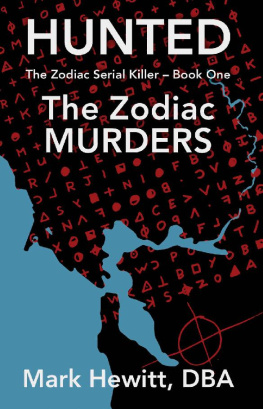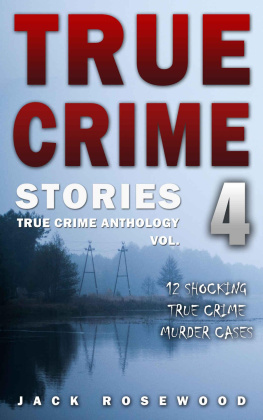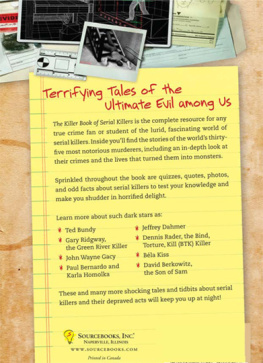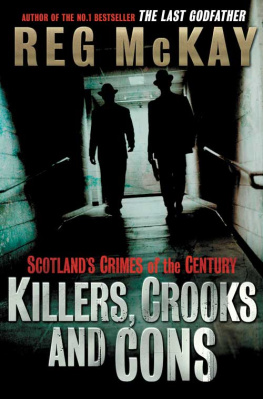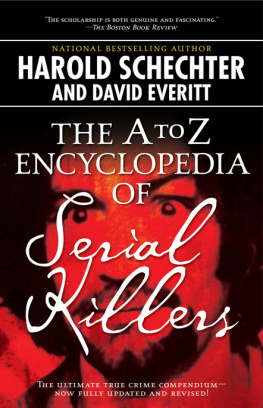As a former journalist, my style of writing is to make the storyentertaining, but to also stick to the facts. I go where the research leads meand in the end, the story is the story. All of the dialogue, quotes, and eventsin this book are how they appeared in the original source material. To helpmake the characters come to life, I relied on clues and statements within theresearch material to guide me with how I portrayed their body language, facialexpressions, mannerisms, gestures, and voice inflections. These charactertraits are used to enhance the scene and set the mood without altering thefacts.
The stories in thisbook were assembled together like a jigsaw puzzle from more than 400newspapers, magazines, books, maps, census reports, and other resources. In anywork of nonfiction, it is inevitable that some facts will be incorrect. In therush to meet deadlines, newspaper reporters often got primary and secondaryfacts wrong. Readers who explore these cases on their own may find newspaperaccounts with conflicting information. This is not uncommon, especially when itcomes to dates, the spelling of names, and other minor details. When confrontedwith those issues, I did my best to verify the information I have included foraccuracy.
Introduction
ALTHOUGH MANY ESSAYS have been written that attempt to analyze the truecrime genre, the contribution that newspapers have made to the field often goesunexplained.
During the latterhalf of the 1800s, three important variables came together that increased thepublics fascination with crimes stories: improved methods of manufacturingpaper, cheaper printing presses, and compulsory public education which led tohigher literacy rates. When these items were in place, newspapers across thecountry multiplied. By the turn of the century, the market had become oversaturated.
Born from this glutwas a fierce competition for survival in which circulation wars broke outbetween rival newspapers. To gain the most readers, editors needed to providethem with content that would drive sales. Invariably, lurid stories of murderand other crimes accomplished that goal by appealing to a universal fascinationwith the dark side of the human mind.
To win the war,daily battles were fought and won by getting to a story first and scooping thecompetition. Editors could no longer sit back and wait for stories to come tothem; reporters had to be sent into the field to sniff them out. One such war,between New York City publishers William Randolph Hearst and Joseph Pulitzer,led to the creation of tabloid journalism. This produced a new breed of writersand editors who introduced aggressive tactics in both the gathering, andpresentation of news, with a special emphasis on crime. These men were smartenough to understand that once readers became invested in a particular casefrom its inception, they were committed to following the story to the very end.This produced a naturally occurring serialization, of sorts, that left readerswith a drive to learn, what happens next?
By the early Twentieth Century, news agencies likeAssociated Press and United Press were able to flourish on the back of anemerging new technology that produced telex machines capable of transmittingentire stories over telegraph wires. This eventually included photographs by the1920s, with improved and more efficient methods by 1934. With market demand forscandal driven murders, police shootouts, brazen robberies, and melodramaticcourt cases thoroughly established, crime stories were able to breakout oftheir immediate geographic area and spread nationally. Several notable examplesfrom this time period include the cases of Harry Thaw, Sacco and Vanzetti,Leopold and Loeb, Ruth Snyder and Judd Gray, and the Lindbergh kidnapping.
But these cases, aswell as those of noted gangsters and depression-era bank robbers, are the ones thathistory remembers most. As I state on my blog, HistoricalCrimeDetective.com,they are the crime stories that have been told by movie and televisionproducers, magazines, and book publishers, ad infinitum to adnauseam.
My purpose forwriting this book was to salvage obscure true crime stories andrepackage them in an entertaining fashion to appeal to a wide audience thatshares my appreciation for their educational and historical value. I wanted togo beyond the same, tired old stories and discover new old stories. Althougha long line of researchers and authors better than me have also taken on thissame mission, I wanted to embark on my own explorations and make a humblecontribution to the true crime genre.
The selectionprocess for the ten stories in this book had to meet a simple criterionthatthey were once very famous crimes, nationally publicized, that have not been adequatelyexplored or written about in decades. Additionally, I wanted this book tofeature a cross-section of cases that covered different locations, time periods,and types of killers.
From there, thedecisions of which stories to include were completely arbitrary. I relied on myreporters instinct, to tell me if a certain case was worthy of furtherexamination. Because of that, I make no assertion that the stories presented hereare the most famous and forgotten, or that these ten are betterthan any others.
As enjoyable as itwas to dig into these cases and write about them, I look forward to exploringmore famous crimes the world forgot and presenting them in future volumes.Thank you for purchasing this book and I sincerely hope you enjoy it.
Chapter One: Denvers Capitol Hill Thug,1900-1901
Silent, stealthy, mysterious, the Thing goes out into thenight and back again to its lair, like a beast of the jungle that prowls andpreys by night, and, gorged and hidden, bears naught and cares naught for thehue and cry by day. The terror of the invisible, the tragic, baffling secrecyof a scourge, are about the Thing, and it is the diabolical master and thedeadly hunter of the hill.... It is a mystery of mysteries. The Boston Globe, February 24, 1901.
IN THE WINTER OF 1900, Denver police had a big problem and localnewspapers had big headlines. Women walking alone in the Capitol Hill area weregetting their heads bashed in with a wooden club or iron pipe by a derangedfiend. By Christmas, five women had been attacked and one of them was dead.Unlike the common footpads that stalked the poorly lit streets, the head-bashernever robbed any of the women or sexually assaulted them. Instead, his singularmotive didnt make sense to police: to hunt down women walking alone after darkand crack open their skulls.




